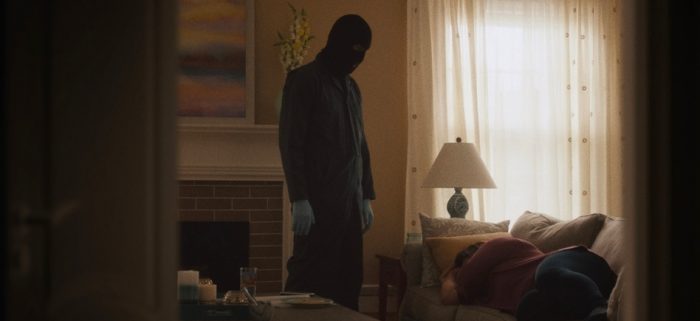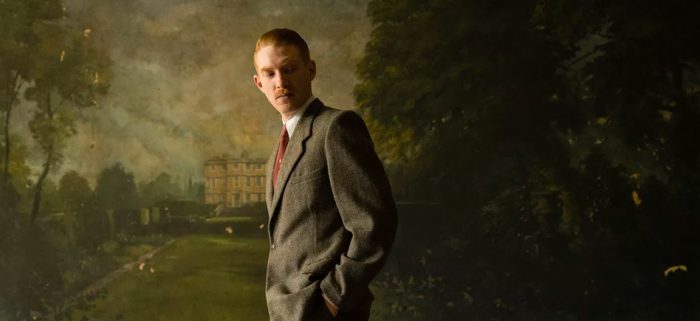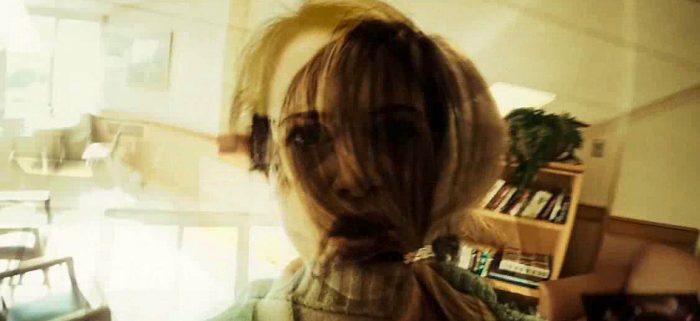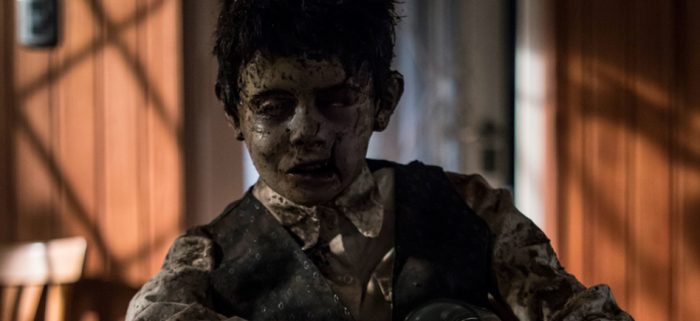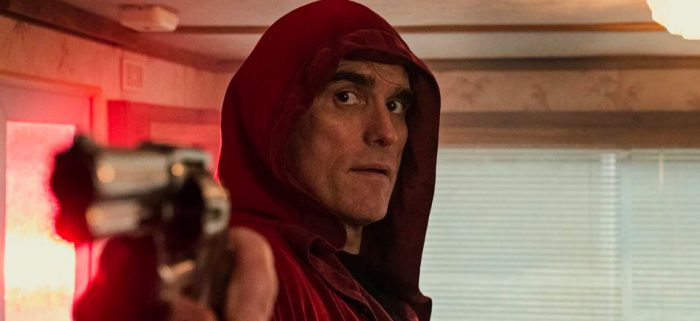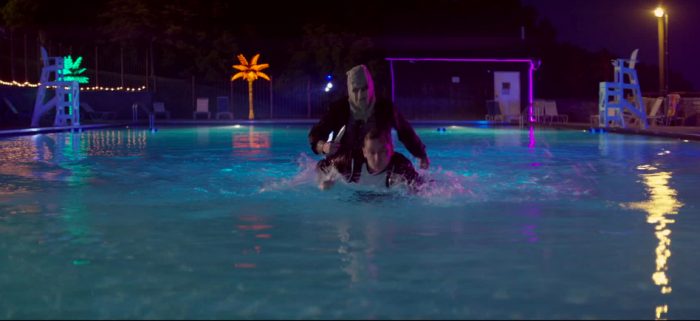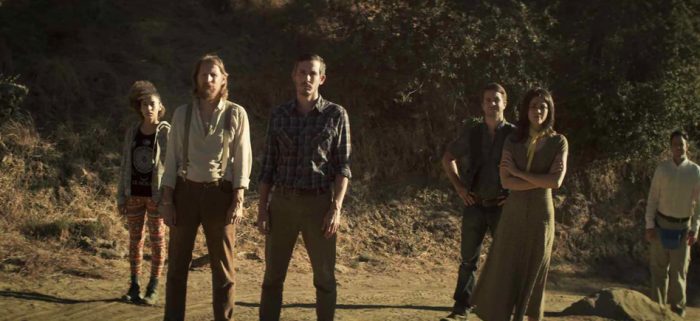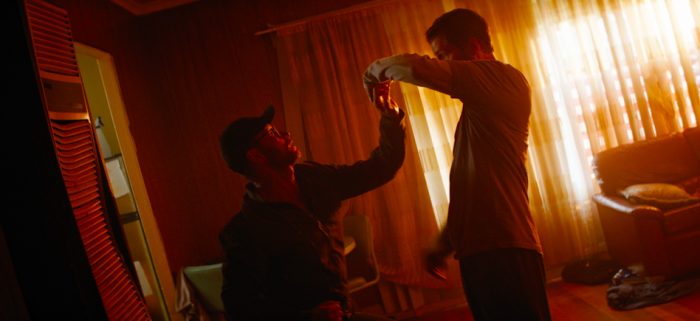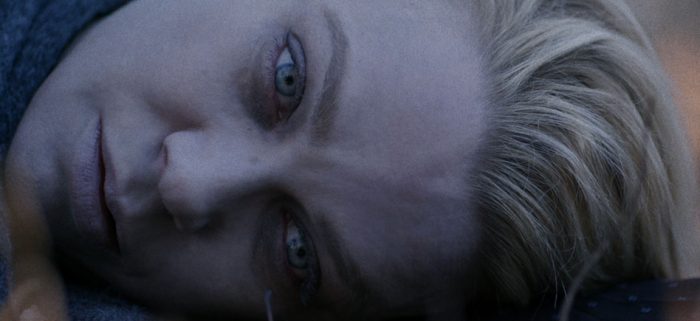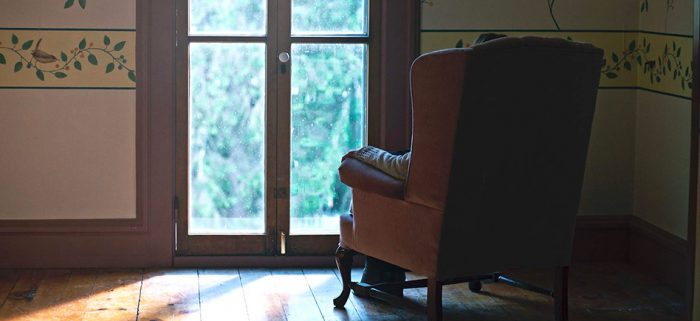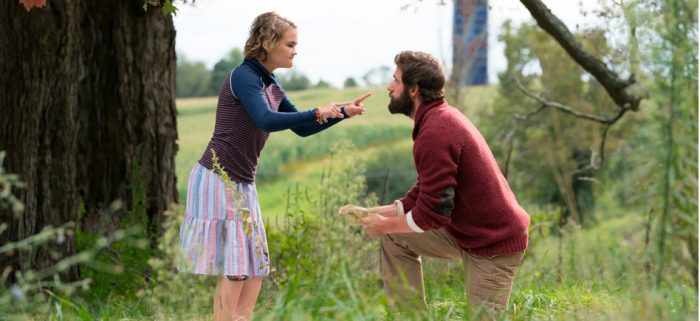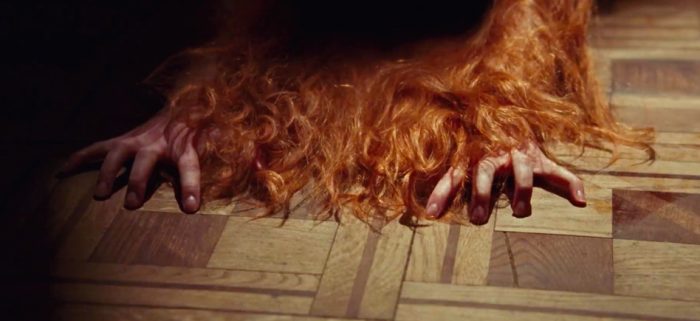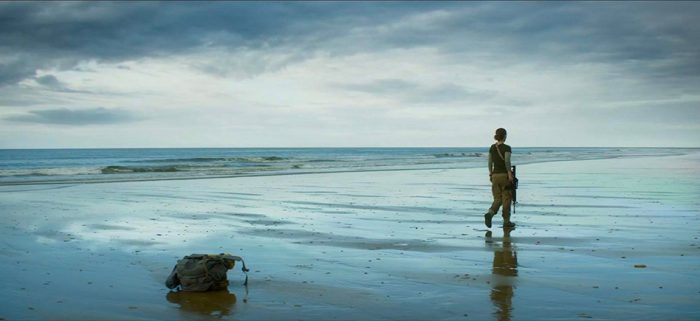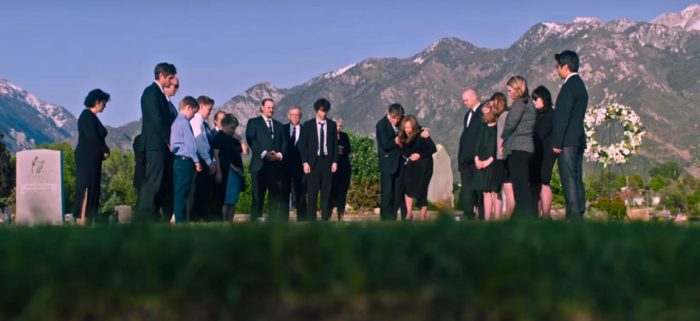The 20 Best Horror Movies Of 2018: The Psychotic Drowns Where The Mystic Swims
Horror had a great year in 2018, perhaps because our everyday lives have morphed into an on-going horror story. But while the real world offers no clear conclusion to our current nightmare, horror movies provide a kind of catharsis, because they always draw to an end. Sure, sometimes evil wins in these films, but sometimes, good prevails. The major themes of horror movies in 2018 revolved around revenge, regret, and reflection. So many films on this list are about characters ruminating on the horrors of the past, and coming out a different person in the present. The message seems to be that we all crave change, but we realize we're going to have to go through hell to achieve it. These are the 20 best horror movies of 2018.
20. The Clovehitch Killer
Dennis Rader, the serial killer infamously known as BTK (for Bind, Torture, Kill), evaded capture for nearly 20 years. And in the midst of committing his grisly murders, he also had time to be a Boy Scout troop leader, and a family man, with a wife and two children. How does someone so inherently evil slip so easily into family life? And how does his family never suspect his true nature? This question is the inspiration for The Clovehitch Killer, Duncan Skiles' unsettling indie horror film that uses almost all of the BTK details, minus the actual names. Teenager Tyler (Charlie Plummer) lives a sheltered, but happy, life with his very Christian family. The patriarch is the extremely nerdy Don (Dylan McDermott)...but what if Don isn't as harmless as he seems? What if Don is, in fact, hiding a terrifying secret? Clovehitch tries to play up the mystery angle longer than it should – we already know Don is, indeed, a serial killer, long before Charlie does. But what makes The Clovehitch Killer so memorable is the believable way Duncan and screenwriter Christopher Ford establish the familial unit, and make us understand how Don's family could go so long never suspecting who he really was. McDermott's performance is the real stand-out here – the actor can switch back and forth between harmless dweeb to terrifying killer with ease, and it's disturbingly realistic.
19. The Little Stranger
The Little Stranger, the latest from Lenny Abrahamson, director of Room, came and went with little fanfare this year. What a shame. Adapted from the novel by Sarah Waters, The Little Stranger is a chilling gothic melodrama that almost immediately establishes a sense of unease. Domhnall Gleeson is Dr. Faraday, a lower-class chap in the 1940s who so badly wants to improve his social status, and also take over Hundreds Hall, a sprawling, crumbling estate he has a storied history with. Faraday works his way into the life of the family inhabiting Hundreds Hall, treating burn victim Roderick Ayres (Will Poulter) while courting (albeit badly) Roderick's sister, Caroline (Ruth Wilson). But there are dark secrets hidden within the peeling walls of Hundreds Hall, and while everyone else seems terrified, Faraday is at peace. This is where he thinks he belongs, and it doesn't matter how many people are killed or maimed in the process. The Little Stranger is a classic, old school ghost story – the likes of which used to be told around flickering fireplaces as the years were drawing to a close. It works its way into your bones, and turns them to ice in the process.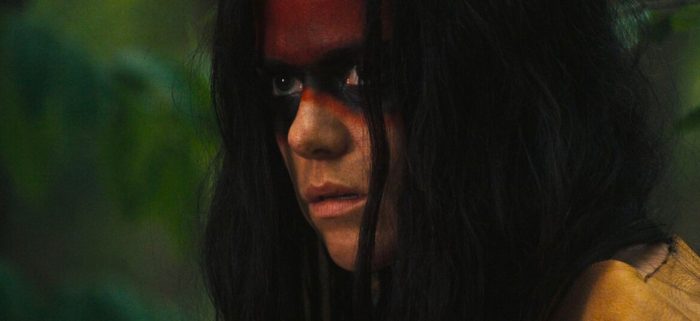
18. Mohawk
It's gutsy to make a movie where America and Americans are so blatantly the villain, and that's exactly what director/writer Ted Geoghegan (We Are Still Here) and co-writer Grady Hendrix did with Mohawk. Like Last of the Mohicans meets Last House on the Left, this American horror story set in the midst of the War of 1812 finds a polyamorous unit – two Mohawks, Oak (an ass-kicking Kaniehtiio Horn) and Calvin (Justin Rain), and British soldier Joshua (Eamon Farren), up against a band of extremely ugly Americans. Six American soldiers, lead by Captain Hezekiah Holt (a deliciously nasty Ezra Buzzington), are in pursuit of the trio, and things go from bad to worse very quickly. Brutal, cruel and unapologetically unpleasant, Mohawk is a great example of how you can do a lot with a little. It's clear Geoghegan and company aren't working with the highest of budgets, but the characters are so well-drawn that we're sucked into their world without question. Mohawk isn't your traditional horror movie, and that's what makes it special.
17. Unsane
Shot entirely on the iPhone 7 Plus, Unsane is Steven Soderbergh's twisted tribute to Samuel Fuller's Shock Corridor, with a 21st century twist. Claire Foy is the wonderfully-named Sawyer Valentini, a high-strung young woman terrified that her stalker (Joshua Leonard) could be lurking around every corner. Things get so bad that Sawyer makes an appointment with a shrink, but this backfires when she accidentally ends up voluntarily committing herself to a mental hospital. She swears to the mental hospital staff that she's not crazy – but of course, that's exactly what a crazy person would say. As if this weren't bad enough, her stalker ends up taking a job at the hospital to get close to her – a fact that no one believes. At first, it looks like Unsane is going to be subtle and artsy. But then Soderbergh pulls the rug out and reveals that what he's really interested in is making a trashy thriller where people suffer terrible, violent fates. This is entirely Foy's show, and while her American accent keeps slipping, she makes for a compelling, frantic heroine.
16. Terrified
Who needs logic when you have non-stop terror? Demián Rugna's Argentinian horror film doesn't really care about plot, or common sense. It only has one goal: scaring the shit out of you. And for the most part, it succeeds. An anthology of sorts, Terrified tells the stories of several paranormal events happening in a Buenos Aires neighborhood. Unseen forces slam hapless people into walls, monsters come out of the closet, and the decaying dead return home. If you're looking for clever plotting, or strong dialogue, look elsewhere. But Rugna knows exactly how to scare the audience, and I'm not only talking jump-scares here (although there are those, too). One segment, in which a dead child ends up returning from the grave and propped-up at a kitchen table, is one of the most effectively scary sequences you'll ever see – the moment builds, and builds, and while the corpse sits perfectly still, the tension and dread is almost unbearable. There's already an American remake in the works, with Guillermo del Toro producing, but it's going to be hard to top what's on display here.
15. The House That Jack Built
Lars von Trier's The House That Jack Built has garnered its fair share of controversy and criticism. Many take issue with the wanton nastiness on display here, in which Matt Dillion's serial killer Jack brutally murders men, women and children with ease, while von Trier turns his camera towards the carnage. To be clear: this is not an easy film to watch, full of graphic set-pieces, and if it's not for you, that's totally understandable. But there's more going on here than just a series of brutal murders. The House That Jack Built isn't really about a serial killer. Instead, it's von Trier splashing all his self-loathing up on the screen, reflecting on his life and his films, and coming to the conclusion that he's doomed to end up in the deepest pits of Hell. Dillion's serial killer fancies himself an artist, and yet, as he travels through the underworld, confessing his crimes to his guide (Bruno Ganz), the guide can't hold back his disdain. Ganz's character doesn't just call Jack out on his foul deeds – he calls him out on his utter bullshit. There's no sympathy to be had here for Jack, which is the same as saying there's no sympathy for von Trier either.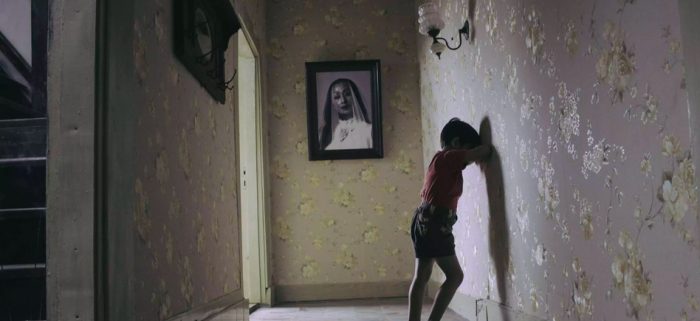
14. Satan's Slaves
This spooky Indonesian horror movie almost immediately establishes its foreboding atmosphere. Set in a expansive, but run-down house near Jakarta, Satan's Slaves follows a family dealing with the death of their matriarch, a former famous singer who has been ill for a long time. Almost immediately following the death (and in fact, before it as well), strange occurrences begin to plague the household. Is it a ghost, or something far more malevolent? Satan's Slaves makes great use of light and shadow, creeping around darkened corners of the house late at night, hinting at something – or something – lurking in gloom. Satan's Slaves grows slightly repetitive towards the end, repeating itself when it really doesn't have to. But the ominous mood is so well formed that you won't mind much.
13. The Strangers: Prey At Night
The original The Strangers was a moody slow-burn; a fright film that took its time to build up to its horror. The Stranger: Prey at Night is the complete opposite. Is it as good as the first film? Absolutely not. But it's a lot of fun to watch. Johannes Roberts cranks up the style (and the gore) as a family finds themselves terrorized by the trio of masked killers from the first movie. Prey at Night is pure throwback, and while that might make some consider it far too derivative for its own good, I'd argue the old school charm works here. The score, by Adrian Johnston, is a John Carpenter rip-off (I say this lovingly), and the soundtrack itself is loaded with '80s hits. In the midst of all of this are several highly memorable set-pieces, most notably a sequence where a character is stalked around (and in) a swimming pool. This is one of 2018's most undervalued horror films.
12. The Endless
The latest indie curiosity from directors Justin Benson and Aaron Moorhead (Spring), The Endless finds the duo playing a pair of brothers who escaped a UFO death cult several years ago. While Justin has struggled to build a real life for himself and Aaron, Aaron has longed to return to the cult. As if on queue, a VHS tape from the cult shows up on their doorstep, and the siblings head back. At first, the cult seems a lot more cheerful and friendly that Justin seems to remember them being, but oddities and unexplained events begin popping-up at an alarming rate. Amidst the mystic mumbo-jumbo and time-and-physics-defying set pieces, The Endless has a rather sweet, down-to-earth message about brotherhood, understanding, and acceptance.
11. Upgrade
Upgrade is the movie Venom wishes it was. Leigh Whannell's inventive action/sci-fi/horror movie stars Logan Marshall-Green as a man in the not-too-distant-future who ends up a quadriplegic after a gang of thugs attack him and his wife. His wife dies, leaving Marshall-Green in a pit of despair. A second chance on life – and revenge – presents itself in the form of an AI chip called STEM. STEM enables Marshall-Green to walk again, but it also has a mind of its own, using his body like a puppet to enact violent retribution. It's darkly comedic, as Marshall-Green bickers with STEM about all this violence. Again, this is almost identical to Venom, and goes to show you how good Venom could have been had someone like Whannell been in charge. More action-based than scary, Upgrade is none the less one of the year's best genre pictures.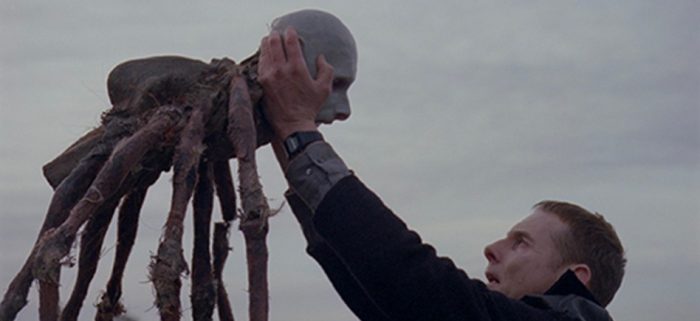
10. Possum
An unnervingly quiet psychological thriller, Possum features Mission: Impossible baddie Sean Harris as Philip, a lonely, mentally unbalanced puppeteer who has no real human contact outside of his cruel stepfather (Alun Armstrong). We never see Philip putting on a puppet show for people, and perhaps that's for the best, since the only puppet he has is a hideous nightmare called Possum, which has a human head that looks eerily similar to Philip, attached to huge, hairy spider legs. The puppet torments Philip, and even though he's constantly trying to get rid of the damn thing by burning it or tossing it into bodies of water, it always ends up back at home. Possum plays its cards close to is vest, and it's not interested in giving you all the answers. Instead, it pulls you into Philip's troubled, tormented mind – and that's a scary place to be. Harris, who rasps and whispers his way through the story, proves that he has a real knack for playing creepy-yet-sympathetic characters. And first-time director Matthew Holness is skilled at giving you the creeps while also showing very little. The sound design of this film alone is enough to keep you up at night.
9. Pyewacket
Goofy title aside, Pyewacket is an emotional coming-of-age story disguised as a supernatural thriller. Nicole Muñoz delivers a strong, empathetic performance as Leah, a teen obsessed with the occult and all things dark and creepy. Leah's father is dead, and she now finds herself constantly at odds with her mother (Laurie Holden). After a particularly heated argument, Leah decides to summon a demon to kill her mother off. This may sound like a pretty terrible thing to do, and yet writer-director Adam MacDonald manages to make it believable, and even somewhat understandable. Every teen in America has probably once wished one of their parents dead in a fit of youthful anger without actually meaning it. There's a part of Leah that doesn't think her demon-summoning will even work, and at first, it seems like that's the case. But as unexplainable, disturbing events begin unfolding in Leah and her mother's secluded woodland home, Leah begins to suspect her black magic ritual was successful, and she desperately needs to reverse it before it's too late. The best horror movies are those that take the time to establish their lead characters, and make us understand their plight, and that's exactly what Pyewacket does, and then some.
8. The Witch in the Window
There's something extra scary about horror films that spend most of their runtime in the daylight. We're so accustomed to the genre bathed in shadow and darkness that when the sun peeks through, it knocks us for a loop. The day is supposed to be a time of safety, where we can escape things that go bump in the night. If those things accompany us into the sunrise, what hope do we have? Andy Mitton's quick (1 hour and 17 minutes total) chiller has a man (Alex Draper) attempting to bond with his estranged son (Charlie Tacker) while renovating and flipping an old house in Vermont. The catch: the house is haunted by a woman believed to be a witch, and the more work done on the house, the more powerful – and manipulative – the ghost becomes. Making great use of the rural landscape, The Witch in the Window is the type of movie that understands seclusion can be both peaceful and creepy. Best of all, though, is the way the majority of the scares take place during the day. The first time you really see the ghost, sitting casually in a chair with her back to us, gazing out a sun-lit window, is bone-chilling in its directness. There's no trick; no quick editing; no fake-out. The ghost is just there, in the daylight...waiting.
7. A Quiet Place
I had no idea John Krasinski had a film like this in him. Krasinski directed movies before A Quiet Place, but his output consisted of mostly forgettable indie comedy-dramas. A Quiet Place was something different – a lean, mean, efficient scare machine. Working with a very tight script from Bryan Woods and Scott Beck (which Krasinski also worked on), the filmmaker delivers one of 2018's best surprises. Terrifying creatures drawn to sound have wiped out most of the human population of the world. A family of survivors – Krasinski and real-life wife Emily Blunt as husband and wife, Millicent Simmonds and Noah Jupe as their children – have learned to live in silence in order to survive. The silence comes particularly easy to Simmonds' character, who is deaf. But the girl carries around guilt, feeling responsible for the death of her younger brother – and she's convinced her father blames her, too. What makes A Quiet Place work so well isn't so much the clever set-up, but the family dynamic. Krasinski does an excellent job establishing this family unit, and as a result, we care what happens to them, and we grow anxious when they find themselves in danger – which is often.
6. Suspiria
Luca Guadagnino's remake of Dario Argento's Suspiria raised eyebrows before it even came out. Why, many wondered, would anyone try to remake Suspiria? The answer: to try something new. Guadagnino and screenwriter David Kajganich keep the basic set-up of the original – an American woman ends up at an overseas dance academy that happens to be home to witches. But the 2018 Suspiria goes off on its own tangents, and is ultimately a story about powerful women and the world they create. While you might assume this means Guadagnino is telling a feminist horror story, that's not quite what's going on here. Instead, the new Suspiria doesn't work in absolutes, and it has no overall moral. Everyone here, even the "good" characters, are flawed, and capable of terrible acts. Dakota Johnson is Susie, a wide-eyed young woman attending the Markos Dance Academy in West Berlin, run by the cigarette smoking wraith Madame Blanc (Tilda Swinton, in one of three different roles she plays here). Blanc is one of many witches running the school, and there's a decision made early on to use Susie as the host body for an ancient, decaying witch. But Madame Blanc takes a shine to Susie, and wants to protect her. Or does she? At 152 minutes, Suspiria packs a lot in, and Guadagnino conjures up a visual style that's stark and wildly different from the brightly-colored world of Argento's original. This is art-horror at its finest; a dreamy, strange, often impenetrable experiment culminating in a gorgeous blood-bath. It's also unapologetic about its devotion to dance as an art form. Scene after scene is devoted to wild, flailing, beautiful sequences of Susie and the other students thudding across wood floors, rolling and twisting and popping their shoulders into impossible angles. It looks both lovely and weird, which pretty much sums up this movie. You'll either love it or hate it – there's no in-between here.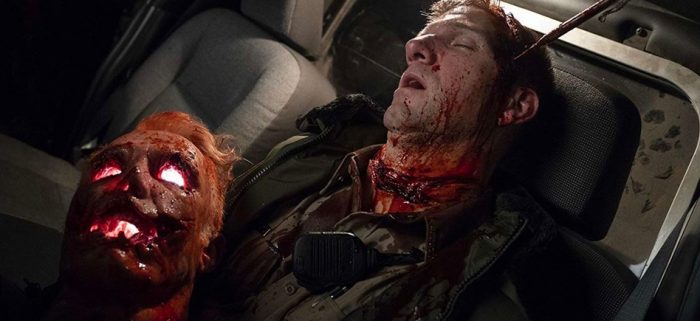
5. Halloween
David Gordon Green's Halloween doesn't even come close to capturing the magic of John Carpenter's original. But it sure as hell is a blast to watch. A sequel/reboot that restores dignity to a series that lost it a long time ago, Halloween is both a brutal slasher movie, and a surprisingly touching story of female empowerment. It gives Jamie Lee Curtis' Laurie Strode the closure she so rightly deserves, allowing Laurie to reclaim her narrative and no longer be thought of as nothing more than a victim. Ignoring all the other sequels, Halloween picks up 40 years after the original film. Michael Myers is still very much alive, and as All Hallow's Eve approaches, he breaks out of an asylum and heads back to Haddonfield. Unlike last time, though, Laurie is waiting for him. She's been waiting for years, in fact, devoting her life to become a gun-toting survivalist. In the process, she's alienated her daughter (Judy Greer, finally given something to do in a movie). The only sympathetic ear in Laurie's life is her granddaughter Allyson (charming newcomer Andi Matichak). Needless to say, when Michael ends up back in town, he comes after Allyson before finding his way to Laurie's fortress-like house. Green and his fellow screenwriters Jeff Fradley and Danny McBride are clearly having fun with all of this, and they're not afraid to show it in the form of frequent humor that generally works. But Halloween also counters all the jokes with surprisingly graphic violence as Michael bashes and slashes his way through a series of victims. Through it all, a pulsing, throbbing, exciting soundtrack from John Carpenter, Cody Carpenter and Daniel Davies keeps things lively. But this is really Curtis' show, and the actress turns in a wonderful performance as the troubled, ass-kicking Laurie.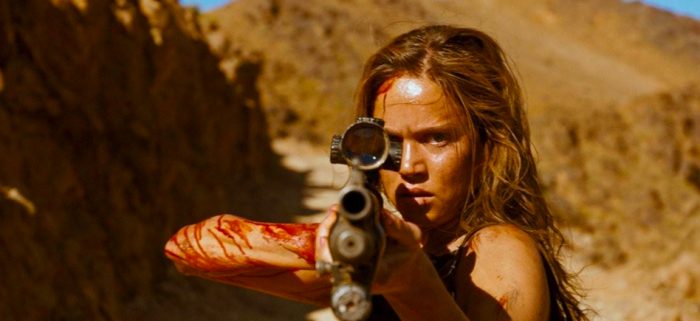
4. Revenge
Coralie Fargeat's bubblegum-colored gorefest is a sight to behold, like a Roy Lichtenstein print splattered with blood. Highly entertaining while also being incredibly difficult to watch, Fargeat takes a notoriously tricky sub-genre – the rape-revenge thriller – and add a decidedly feminist streak. Matilda Lutz is a revelation as Jen, an young woman who is having an affair with Richard (Kevin Janssens). The lovers fly out to a secluded house in the desert, but their tryst is interrupted when Richard's oafish hunting buddies show up. One of the men proceeds to sexually assault Jen, and rather than be outraged, Richard decides to cover the whole thing up by bumping Jen off. But Jen doesn't die – despite being pushed off a cliff and impaled on the branch of a dead tree. Soon, she's stalking through the desert on a journey of bloody revenge. Revenge eschews realism – the wounds Jen suffers are impossible to survive, and yet survive them she does, again and again, as if she's somehow immortal. It all crescendos in a ghoulish-yet-satisfying bloodbath, scored by Robin Coudert's electronic soundtrack.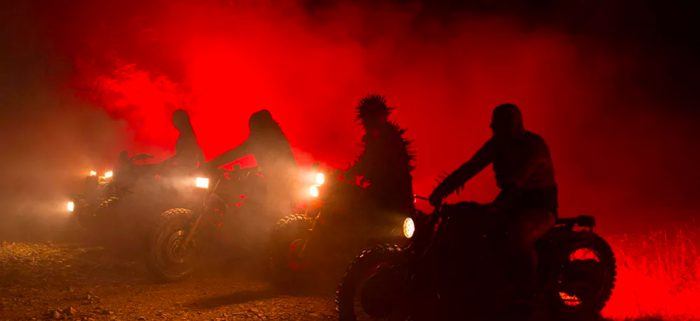
3. Mandy
All the hype, all the praise, all the shock surrounding Mandy is justified. This movie is everything you heard, and more. Panos Cosmatos has created a head-trip pulsing with strange black magic. An occult-laden journey into darkness, and beyond. And oh yeah, there's a goblin puppet that vomits mac-n-cheese. Nicolas Cage is on a quest to kill the crazy cult that wronged him and his lady love, Mandy (Andrea Riseborough). Mandy exits the film early, and yet her presence remains a haunting figure, lingering over the proceedings. Cage is great here, doing some of his best work in a very long time. But Mandy really belongs to Cosmatos, and the black-and-red cinematography from Benjamin Loeb, giving the entire movie the appearance of something otherworldly. The score, courtesy of the late Jóhann Jóhannsson, is a work of doom-laced art. All of these elements coalesce, creating a film as unforgettable as Mandy herself.
2. Annihilation
Someone might argue that Annihilation isn't technically a horror film, but they would be mistaken. Alex Garland's cerebral sci-fi story focuses on some truly horrific topics – death, disease, and the unknown. It also contains one of 2018's most terrifying scenes, involving a mutant bear that cries with a human voice. Even if you strip all the other scary elements out of Annihilation, this scene alone would guarantee the movie its place in the hallowed halls of horror. In the film, an anomaly known as "The Shimmer" has turned a patch of national park land into a strange, ever-changing, alien landscape. A team of women – Natalie Portman, Jennifer Jason Leigh, Gina Rodriguez, Tessa Thompson and Tuva Novotny – venture into the area, where they're quickly confronted with all kinds of unexplainable elements. More than that, though, is the horrifying realization that the changing landscape is changing them, on a cellular level. The person who returns from The Shimmer (if they ever return at all) won't be the same person who went in. Garland doesn't want to give us all the answers, which might frustrate some viewers, but the unknowing is part of what makes Annihilation so fascinating. Like the team that leads the film, we're explores in an uncharted land, completely at odds with what we're being presented. How scary is that?
1. Hereditary
It seems that every few years, a horror movie comes along that has critics calling it "This generation's Rosemary's Baby" or an heir-apparent to The Exorcist. That usually isn't true, even if the film in question is good. Hereditary, however, earns that distinction, and then some. It really is the modern-day equivalent of Rosemary or The Exorcist – a horror film that's interested in both dramatic dynamics and giving you the creeps. Of all the horror films of 2018, Hereditary stands out the most. A shockingly assured debut from Ari Aster, this deliciously nasty piece of work, Hereditary tricks the audience into thinking it's going to be a horror film about grief. That Aster is just using the horror framework to tell a more personal, more realistic story. But that's not the case, and the sudden shift from horror-tinged drama to full-blown supernatural spook show has given more than a few people whiplash. I've heard several viewers complain that they liked the first half of the film – the more dramatic, down-to-earth half – far more than the second. But in my humble opinion, those viewers are missing the point. That first half of Hereditary exists solely to lull the viewer into a state of acceptance. We feel safe and secure in our knowledge of where we think the movie is going. And then things go in a completely opposite direction, and we learn that the main characters are nothing more than pawns being moved about by malevolent forces. Is this manipulative? Is Aster cheating? Perhaps. But it works, so we shouldn't complain. Toni Collette is incredible as a woman coming apart at the seams following two deaths in her family. As she attempts to confront her grief and make sense of unexplained circumstances, she's drawn deeper and deeper into a situation from which there is no escape. And her family is drawn right along with her. As Hereditary draws to its lunatic conclusion, it's horrifying message becomes abundantly clear: we can't escape the triumph of evil. We can only delay it for a little while.

